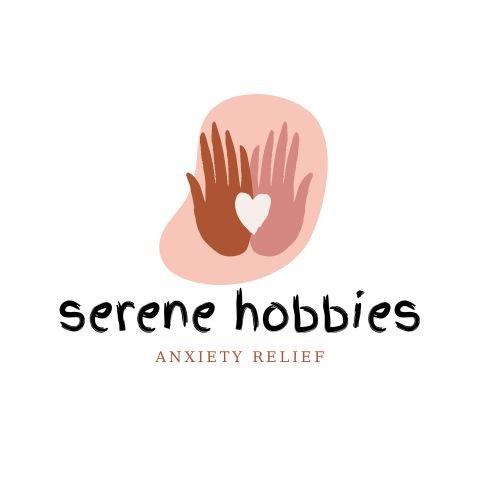Humming is your natural stress-relief tool that works by activating your vagus nerve and boosting feel-good chemicals in your brain. You'll notice immediate benefits when you start with a gentle "mmm" sound on your exhale, focusing on the vibrations in your face and chest. Try different pitches to find your sweet spot, and experiment with techniques like ascending hums for tension release or ocean wave patterns for deeper relaxation. You can practice anywhere – during your commute, at your desk, or while doing chores. The science behind this simple practice reveals powerful benefits that transform your daily wellness routine.
The Science Behind Humming

Through vibrations in your vocal cords, humming creates a natural resonance that affects both your mind and body. When you hum, you're activating your vagus nerve, which plays a vital role in your parasympathetic nervous system – the network responsible for your "rest and digest" response. This activation helps lower your heart rate, blood pressure, and stress hormones like cortisol.
The vibrations produced by humming also increase nitric oxide production in your nasal cavities. This molecule helps dilate your blood vessels, improving blood flow and oxygen delivery throughout your body. You'll notice enhanced sinus ventilation and better breathing patterns when you practice humming regularly.
Research shows that humming at specific frequencies can synchronize your brainwaves, leading to improved focus and relaxation. The ideal frequency range lies between 110-432 Hz.
You'll find that sustained humming for just 5-10 minutes can trigger the release of endorphins, your body's natural mood elevators. The rhythmic nature of humming also helps regulate your breathing pattern, naturally slowing it down to a more relaxed state.
Getting Started With Mindful Humming
Begin your mindful humming practice by finding a quiet, comfortable space where you won't be disturbed. Sit or lie down in a position that allows your breath to flow freely, and gently close your eyes. Take a few deep breaths to center yourself before starting your humming practice.
When you're ready to begin, follow these simple steps for effective mindful humming:
- Start with a gentle "mmm" sound on your exhale, keeping your lips closed and letting your teeth part slightly. You'll feel a subtle vibration in your face and chest.
- Experiment with different pitches until you find one that feels natural and creates the strongest vibration in your body – there's no "right" note to hum.
- Maintain each hum for the length of your natural exhale, without forcing or straining your breath.
- Focus your attention on the physical sensations: the vibrations in your throat, the movement of air, and the sound itself.
As you practice, don't worry about making it perfect. Instead, notice how the vibrations affect different areas of your body and how your mind responds to the soothing resonance.
Best Humming Techniques

Once you're comfortable with basic mindful humming, specific techniques can enhance your practice and deepen its benefits. You'll want to explore different tones, rhythms, and breathing patterns to find what works best for your relaxation needs.
| Technique | Description |
|---|---|
| Ascending Hum | Start low and gradually increase pitch; helps release tension |
| Descending Hum | Begin high and slowly lower pitch; promotes grounding |
| Breath-Sync Hum | Hum for 4 counts, hold 4, release 4; regulates breathing |
| Ocean Wave Hum | Alternate between soft and loud humming; mimics waves |
| Heart-Rate Hum | Match humming to heartbeat; creates body awareness |
Focus on maintaining a relaxed jaw and keeping your tongue loose against the roof of your mouth. You'll notice vibrations in different areas of your body depending on the pitch – lower tones resonate in your chest, while higher ones vibrate in your head and sinuses. Try humming through your nose with closed lips for a stronger vibration effect. Remember to stay mindful of any tension and adjust your technique if you feel strain in your throat or jaw.
Where and When to Hum
Finding the right time and place for humming practice can make a significant difference in your relaxation results. You'll want to choose environments where you feel comfortable and won't disturb others. Your home, car, or a peaceful outdoor setting can serve as ideal locations for humming exercises.
While some people prefer complete silence, you can also hum during your daily activities to maintain a calm state of mind.
- Private spaces: Practice in your bedroom, bathroom, or home office where you won't feel self-conscious about making sound. These spaces often have good acoustics that enhance your humming experience.
- Outdoor settings: Try humming during nature walks, while sitting in your garden, or at a quiet park. Natural surroundings can amplify the calming effects.
- Transit times: Use your commute time effectively by humming in your car or while walking to work. The rhythmic movement can complement your practice.
- Stress triggers: Incorporate humming whenever you feel tension building – before meetings, during work breaks, or after challenging conversations. This helps prevent stress from escalating.
Benefits Beyond Stress Relief

While humming's primary purpose is stress reduction, its advantages extend far beyond simple relaxation. You'll find that regular humming can help improve your sinus health by increasing nitric oxide production, which enhances airflow and reduces inflammation in your nasal passages.
When you hum, you're also exercising your vocal cords and strengthening the muscles in your throat and soft palate. This can lead to better speech clarity and reduced snoring. The vibrations created during humming can help clear your throat naturally and may even ease mild congestion.
You'll notice improved focus and concentration when you incorporate humming into your daily routine. The rhythmic nature of humming helps synchronize your brain waves, creating a meditative state that enhances memory retention and creative thinking.
It's also an effective way to regulate your breathing patterns, which can boost oxygen flow to your brain.
Additionally, humming stimulates your vagus nerve, which plays a significant role in your body's rest-and-digest response. This stimulation can improve your digestion, heart rate variability, and overall immune function, making humming a simple yet powerful tool for whole-body wellness.
Frequently Asked Questions
Can Humming Exercises Make Existing Anxiety or Panic Attacks Worse?
While humming can calm you down, it's possible to feel more anxious if you're forcing yourself to hum during a panic attack. You'll want to listen to your body and stop if it feels uncomfortable.
Is It Safe to Practice Humming Techniques While Taking Antidepressants?
You can safely practice humming while taking antidepressants, as there's no known negative interaction. However, if you're concerned, it's best to check with your doctor about incorporating any new relaxation techniques.
How Long Does It Take to See Noticeable Results From Daily Humming?
You'll often notice immediate calming effects from humming, but consistent results typically develop within 1-2 weeks of daily practice. For best results, try humming for 5-10 minutes at least twice daily.
Why Do Some People Experience Headaches When They First Start Humming Exercises?
When you first start humming exercises, you may get headaches because you're tensing your facial muscles or breathing incorrectly. It's common as your body adjusts to the new vibrations and breathing patterns.
Can Children Use Humming Techniques for Stress Management?
Yes, you can teach children humming techniques. They're safe and effective for kids to manage stress. Just keep sessions short, make it fun, and don't force them if they're not interested in participating.
In Summary
You've now discovered a powerful yet surprisingly simple tool for managing your daily stress. Whether you're stuck in traffic, preparing for a presentation, or winding down after a long day, humming can be your go-to relaxation technique. By making humming a regular part of your self-care routine, you'll tap into its calming effects and experience benefits that extend far beyond stress relief.





Leave a Reply